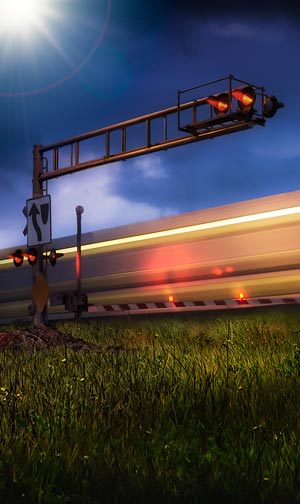Deadly Head-on Union Pacific Train Collision in Oklahoma Reflects Lack of Railroad Industry Safety Concern
(Goodwell, Oklahoma – June 24, 2012)
Less than two months after railroad industry lobbyists secured a five-year delay in the institution of the Positive Train Control collision prevention system, another deadly collision has occurred. This time two Union Pacific Railroad freight trains collided at about 10:08 A.M. two miles east of the Oklahoma panhandle in the town of Goodwell, OK.
Tragically, three of the four crew members that were involved in the collison were killed. Listed as killed were conductor Brian L. Stone, 50 of Dalhart TX, as well as locomotive engineers Dan Hall and John Hall (no relation) also both of Dalhart. The fourth crew member, Juan Zurita, survived the collision by jumping to safety when he realized the crash was imminent.
The collision and derailment occurred on the UPRR track paralleling U.S. Highway 54, and shut down the major arterial vehicle route across Texas County. A long-distance trucker traveling from Phoenix to Kansas City on Highway 54, Gary Mathews of Independence, MO, witnessed the entire catastrophe and was barely 50 yards from the point of the collision. Mathews said he “saw the trains coming toward each other for about three miles while the eastbound train continued to travel at a steady 68 mph, the westbound train was moving very slowly before the collision.”
“I was thinking, I’m going to see a train crash unless somebody does something,” recalled Mathews. “They’re not blowing the horn to each other, blinking lights or whatever. I kept thinking, “this cannot happen, it cannot happen.’”
A 14-member team of investigators from the National Transportation Safety Board arrived in Goodwell Sunday evening to conduct, what is expected to be, a five-day investigation.
Even though the National Transportation Safety Board had found the lack of a satellite-utilization system designed to keep trains from colliding was the primary cause of several deadly train collisions in the past few years, the railroad industry lobbied, through the Association of American Railroads, for a five-year delay to the institution of Positive Train Control, which was scheduled to take effect in 2015. Citing what one congressman called “a prime example of regulatory overreach,” adding that PTC’s institution was “not going to make things safer out there,” as well as what the AAR referred to as an “unrealistic” deadline, the effective date was moved back until 2020.
The tragedy in Goodwell, OK Sunday is likely to represent, yet again, a perfect example of the type of situation the PTC system is designed to prevent.


